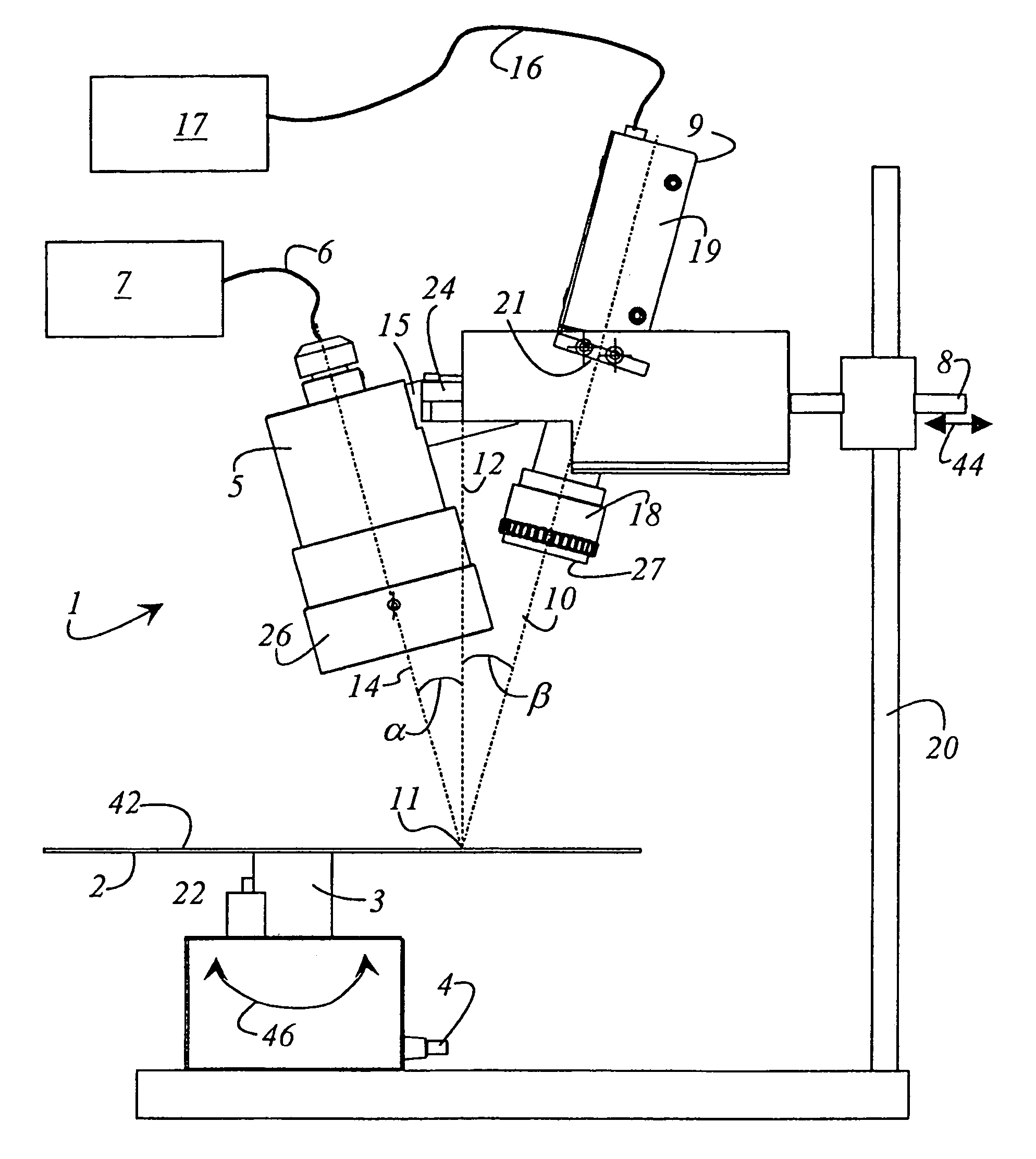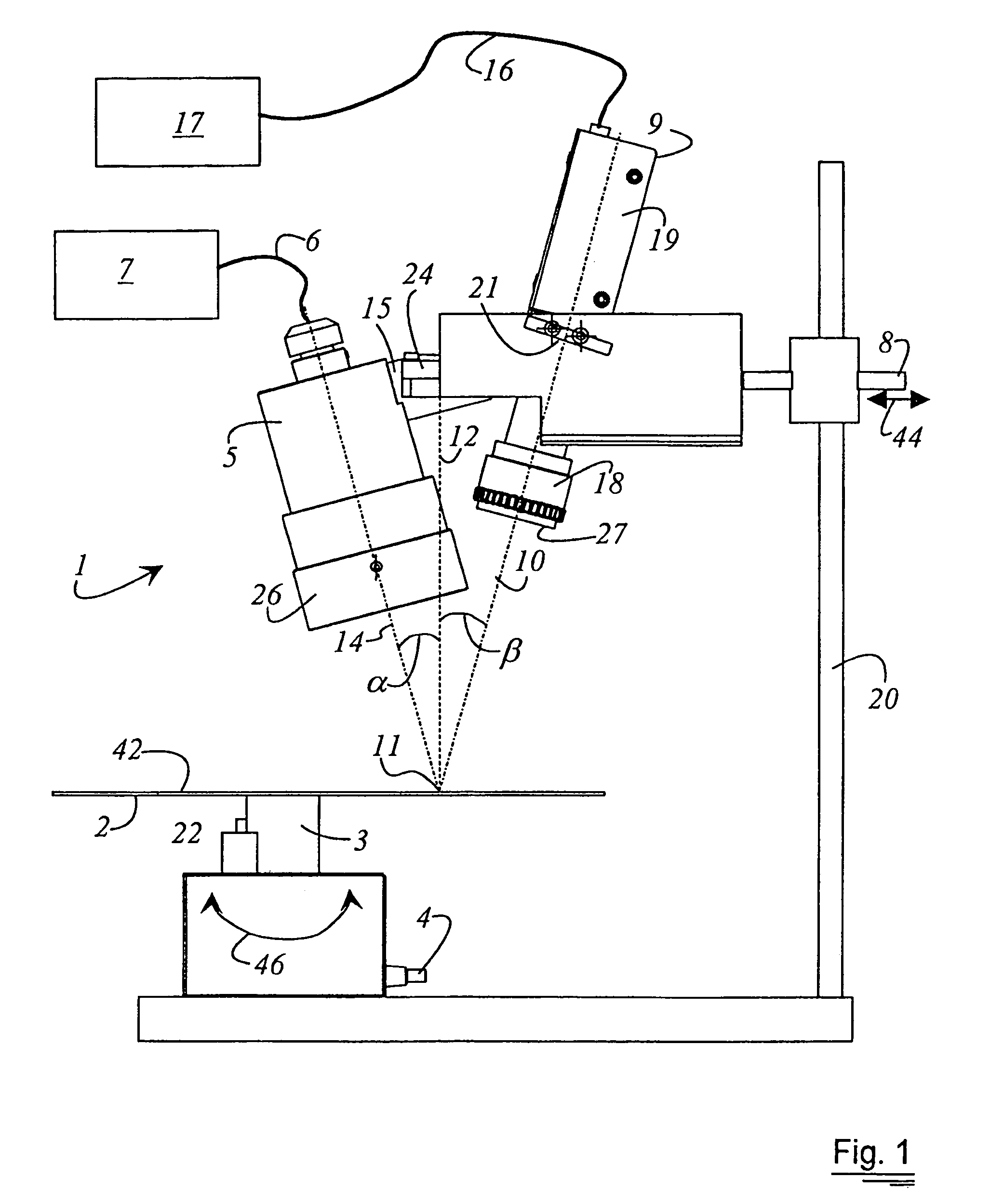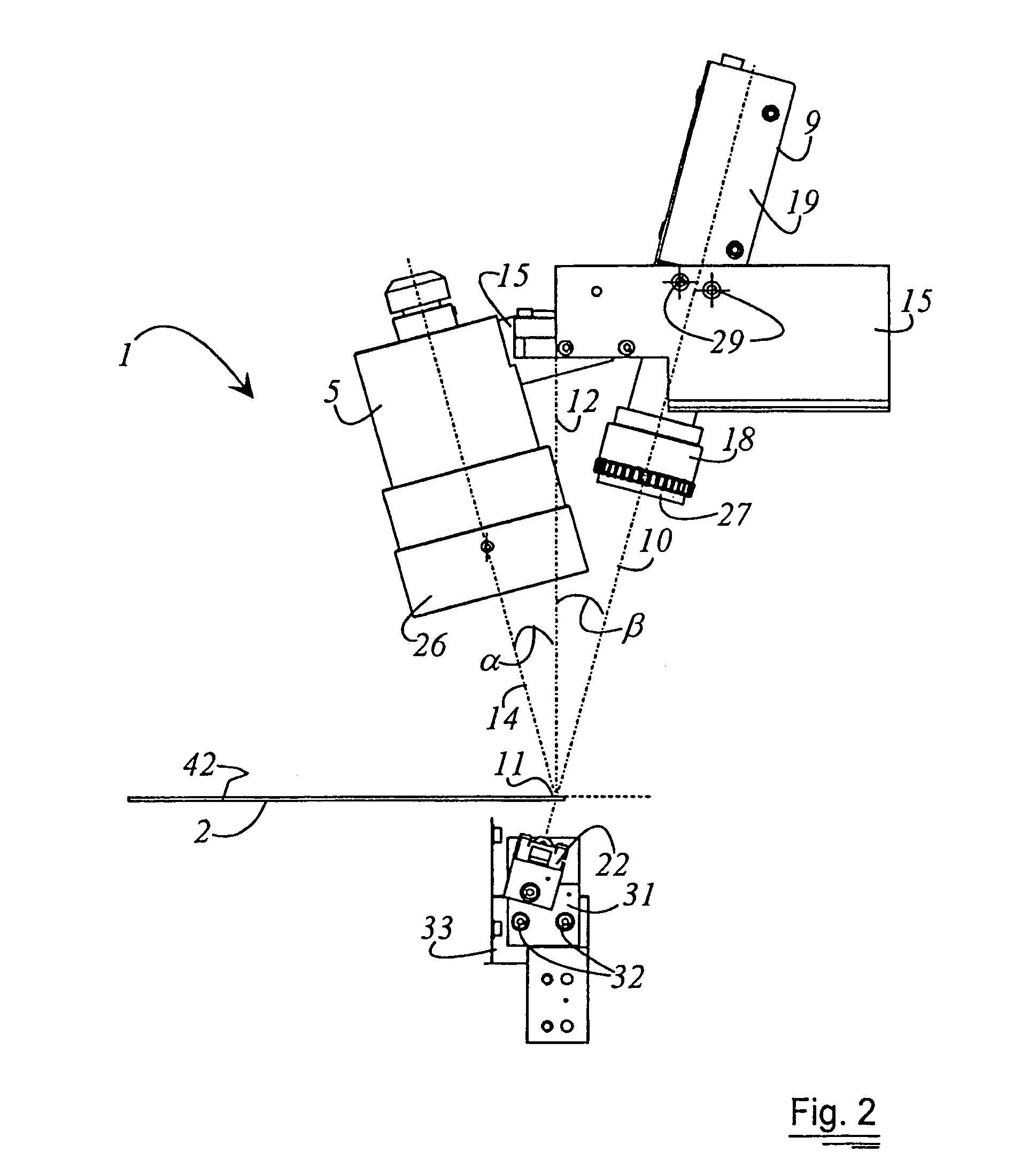[0010]It is therefore the object of the present invention to describe an apparatus with which regions from which
resist has been removed, in particular edge-bead-removed regions, can reliably be made visible and the quality of the edge bead removal can easily be determined or assessed.
[0017]Although edge regions of the wafer are preferably inspected, according to the present invention any other desired regions on the surface of a wafer or
semiconductor substrate can also, in principle, also be inspected, for which purpose the illuminating light is directed appropriately onto the region to be inspected, and the light reflected there is imaged appropriately into the imaging device. For imaging of the illuminating light and of the light reflected from the surface, further imaging means, for example deflecting mirrors, prisms, or the like, can be introduced into the beam path so that the apparatus can be configured in even more variable fashion.
[0020]The transmission axes of the two polarizing means are preferably aligned relative to one another so that an optimum contrast between treated and untreated surface regions of the wafer can be achieved. For this purpose, the transmission axes are preferably coordinated with one another, using light that is reflected exclusively from untreated or treated surface regions of the wafer, in such a way that the light behind the polarizing means associated with the imaging device substantially disappears (zero balancing). This has the
advantage that the
gain of the imaging device can be set relatively high, so that even very small intensity changes, brought about by changes in the polarization state of the light reflected at surface regions having differing properties, will result in relatively large
signal amplitudes. The aforesaid zero balancing is preferably performed on the basis of the surface regions that predominate in terms of area. For example, if a comparatively small edge-bead-removed region is to be determined and assessed, the aforesaid zero balancing operation is preferably performed on the basis of regions from which no
resist has been removed.
[0023]According to a first preferred embodiment, the
illumination angle α corresponds to the Brewster angle of the material of the wafer to be inspected, for example
silicon, or of a layer applied onto the wafer to be inspected, for example a photoresist layer that is to be removed from the edge region. In this case the light reflected from the material or from the layer applied thereonto is reflected in such a way that it is polarized perpendicular to the
image plane extending between the illumination axis and image axis. The aforementioned zero balancing can thus easily be performed by simply rotating the polarizing means associated with the imaging device, so that its transmission axis lies in the
image plane. Although the term “zero balancing” is used hereinafter, it should be noted that this can also be incomplete, as a result in particular of inhomogeneities and irregularities on the surface of the wafer to be inspected. In order to perform the aforementioned zero balancing, it may also be advantageous if the
illumination angle α does not correspond exactly to the Brewster angle, but instead is inclined at a preferably small angle toward or away from the wafer normal line. This makes it possible, for example, to compensate for inhomogeneities and irregularities on the surface of the wafer to be inspected.
[0024]According to a further preferred embodiment, the
illumination angle α is relatively small, so that the illuminating light is incident at a relatively steep angle onto the surface to be inspected. The illumination angle α is preferably in the range from approximately 7 degrees to approximately 20 degrees, preferably in the range from approximately 14 degrees to approximately 16 degrees in order to produce even more advantageous properties for zero balancing, and in even more preferred fashion it is approximately 15 degrees in order to achieve even more advantageous zero balancing properties. This takes into account the effect that thin, relatively regular features, for example conductor paths, circuit features, etc, that are often provided on the wafer surface act like a groove
grating, thus resulting in
diffraction effects and polarization effects. These can have an influence on the aforementioned zero balancing, which can be compensated for by setting the illumination angle to a relatively steep incidence angle. In principle, a stepless transition between the aforementioned Brewster angle and the relatively steep incidence angle just mentioned is possible for illumination angle α.
[0025]The illumination device can be equipped both with a polychromatic and with a monochromatic
light source. For example, the
light source can be a
mercury vapor lamp or a cold
light source having an attached
fiber bundle for transmitting the light. The use of an LED or a
laser with beam spreading is also conceivable. Both a divergent and a convergent illumination beam path are
usable. In a preferred embodiment, a telecentric illumination beam path is preferred, slight deviations from strictly telecentric beam guidance being permissible with no loss of illumination quality.
 Login to View More
Login to View More  Login to View More
Login to View More 


